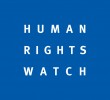HONG KONG, CHINA – Securitization of assets in emerging East Asian bond markets have gathered pace after the 1997/98 financial crisis and has the potential to be used as a tool to fund the region�s massive infrastructure needs, provide support to microfinance and human resource development, a report issued by ADB says.
Despite its growth, Asia�s use of securitization is far more modest than in Europe and North America. Yet structured finance holds considerable potential for regional development.
For securitization to take hold in the region, governments and regulators need to develop transparent legal and taxation framework, clear accounting principles and promote common standards across the region, the April edition of Asia Bond Monitor (ABM) says.
�It is also crucial for the governments and the financial industry to support standardization of credit assessment and documentation across the region,� says Jong-Wha Lee, Head of ADB�s Office of Regional Economic Integration (OREI).
The ADB has taken several initiatives to support the development of securitization in Asia and the Pacific, including legal and technical in asset-backed securitization in the PRC, securitization of diversified payments rights in Kazakhstan and the Asian Currency Note Program.
ABM says governments should explore new initiatives to use securitization to support refunding through microfinance, providing credit and structuring long-term bank loans to students and for human resource development and to diversify financing infrastructure investment.
Securitization of assets gained some momentum in Asia after the 1997/98 financial crisis, particularly in debt workouts in South Korea and in some instances as an instrument to recycle non-performing loans. The result was a wave of new asset management companies (AMCs), publicly capitalized companies charged with acquiring and restructuring impaired assets.
In developed East Asia, commercial and residential mortgage-backed securities dominate in Hong Kong, People�s Republic of China, Japan and Singapore, while asset backed securities dominate in Korea.
The introduction of Basel I norms triggered more sophistication and regulation across the region, providing investors with some protection and confidence in increasing their appetite for securitization. Basel II hopes to create common standards for compliance and supervision, but its impact on small and medium enterprises is yet to be known.
ABM also highlights that emerging Asian bond markets expanded robustly in the second half of 2006, lifting the full year growth of 32.4 percent, well above the rates for 2004 and 2005.
ABM examines local currency bond market developments in Emerging East Asia, defined as the Association of Southeast Asian Nations member countries, plus the People�s Republic of China (PRC); Hong Kong, China; and Republic of Korea.
Government bond markets in the region grew 30 percent in 2006 on the back of strong issuance from government agencies and several local governments.
Corporate bonds outstanding surged 36 percent in 2006, largely due to increased issuance in the PRC and the trend of quasi-government companies to issue under corporate market regulations.
Asia�s debt markets will continue to attract global investors searching for yields, but increased market volatility may raise cost of financing, giving policymakers an incentive to take measures to deepen financial markets, ABM says.
****** INBOX is an archive of press releases, statements, announcements, letters to the editors, and manifestos sent to Davao Today for publication. Please email your materials to davaotoday@gmail.com. Davao Today reserves the right to edit or refuse material for publication. *****










